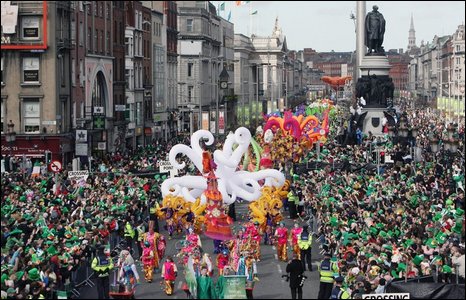 April Fools’ Day is celebrated around the world as a holiday of practical jokes and hoaxes.
April Fools’ Day is celebrated around the world as a holiday of practical jokes and hoaxes.
Today is March 31, the last day in March and the eve of a globally recognized holiday: April Fools’ Day. April Fools’ Day is recognized differently in various cultures, and many individuals have unique ways of celebrating this holiday. I have always wondered how April Fools’ Day originated, so we will take a brief look at the holiday’s history and then discover how it is celebrated around the world.
 Some historians trace the holiday’s roots to 1582 when the Julian calendar was replaced with the Gregorian calendar.
Some historians trace the holiday’s roots to 1582 when the Julian calendar was replaced with the Gregorian calendar.
The annual tradition of April Fools’ Day and its practical jokes starting to spread in England during the 1700s, but the exact origins of the holiday remain a mystery. Some have said that the holiday stems from ancient festivals such as Hilaria, which was celebrated in Rome at the end of March and involved people dressing up in disguises, or the Medieval Festival of Fools, which was held on December 28 and is a day on which people still play pranks on each other in Spanish-speaking countries. Others state that the holiday originated in 1582 when the French switched from the Julian calendar to the Gregorian calendar. They state that people who failed to realize that the start of the new year had moved to January 1 continued to celebrate the new year during the last week of March through April 1, and people made fun of these “behind the time’s” individuals by plaguing them with jokes and hoaxes.
 April Fools’ jokes take many forms such this example where the municipality of Beyoglu placed balloons in the streets of Istanbul.
April Fools’ jokes take many forms such this example where the municipality of Beyoglu placed balloons in the streets of Istanbul.
Despite a lack of exact origin, the holiday thrives around the world today. Corporate offices, media venues, fast-food restaurants and multiple other enterprises take part in this holiday through their own hoaxes and fictional claims. Numerous individuals take part in the holiday through various jokes and hoaxes as well. One of my aunts covered every door handle with Vaseline at the office she works at in Connecticut as a joke last year on April 1, and she also covered some of her coworkers’ steering wheels with Vaseline and plastic wrap as well. Practical jokes, trickery and outrageous stunts are all characteristics of April Fools’ Day in the United States, and the prank victims are supposed to maintain good humor and enjoy the hoax.
 Fish are placed on peoples’ backs in France as a joke in celebration of Poisson d’Avril.
Fish are placed on peoples’ backs in France as a joke in celebration of Poisson d’Avril.
April Fools’ Day is celebrated in other cultures but takes different forms. The holiday in France is called Poisson d’Avril, which translates to “April Fish.” The term refers to fish that are recently hatched and easy to catch, and the traditional April Fools’ prank in France is to tape a fish to someone’s back and then call them a “Poisson d’Avril” when they discover it. This is also a common trick in Italy.
Canadians celebrate the holiday similar to Americans, and they also incorporate the tradition of Poisson d’Avril from France. Canadians announce a humorous award for April Fools’ Day called the Pigasus Award, and this award exposes paranormal or psychic frauds or ridicules institutions that promote paranormal claims. The award winners are announced every April 1.
 “Kick Me” signs are placed on people’s backs in Scotland on April Fools’ Day, also known as April Gowk.
“Kick Me” signs are placed on people’s backs in Scotland on April Fools’ Day, also known as April Gowk.
April Fools’ Day lasts for two days in Scotland and is sometimes called Taily Day or April Gowk. On the first day, the traditional prank is to send someone on a “fool’s errand,” and this is accomplished by sending someone an urgent note that they must deliver, but the receiver learns that it is an April Fools’ Joke. The receiver then sends the not on to another person and the note keeps moving throughout the day. The traditional prank on the second day is to stick an April Gowk sign on someone’s back, and this sign signifies “Kick Me.”
In Poland April Fools’ Day is called Pryma Aprylis. Instead of playing pranks like other nations, the Polish people celebrate his day by dressing up in costumes. The holiday in Poland is mostly a child’s holiday, but adults also participate.
 Dressing in costumes is a large part of the April Fools’ celebration in Poland, as seen by the children in this picture.
Dressing in costumes is a large part of the April Fools’ celebration in Poland, as seen by the children in this picture.
Denmark, Iran and a few Hispanic countries such as Spain and Mexico have April Fools’ Day celebrations that are not celebrated on April 1. Denmark’s April Fools’ Day is on May 1, and the holiday is called Maj-kat. Hispanic individuals celebrate the holiday on December 28 with pranks and hoaxes, and the holiday is called the Feast of the Innocents. Finally, Iran celebrates Sizdah Bedar at the beginning of April, and it shares many of the same prank-like traditions of April Fools’ Day.
 Keep an eye out for April Fools’ jokes, for you may be the target of clever pranks this holiday.
Keep an eye out for April Fools’ jokes, for you may be the target of clever pranks this holiday.
Although April Fools’ Day has origins that are somewhat difficult to define, this holiday has made its mark on many areas of the world. So keep an eye out for pranks that you might encounter tomorrow, because the joke just may be on you.
To learn more about April Fools’ Day around the world, visit http://voices.yahoo.com/april-fools-day-traditions-around-world-2813042.html, http://crossingtimezones.com/2011/04/01/origins-and-traditions-of-april-fools-day-around-the-world/, http://www.alsintl.com/blog/april-fools-day/.
To learn more about the history of April Fools’ Day, visit http://www.history.com/this-day-in-history/april-fools-tradition-popularized and http://www.museumofhoaxes.com/hoax/af_database/permalink/origin_of_april_fools_day.

























